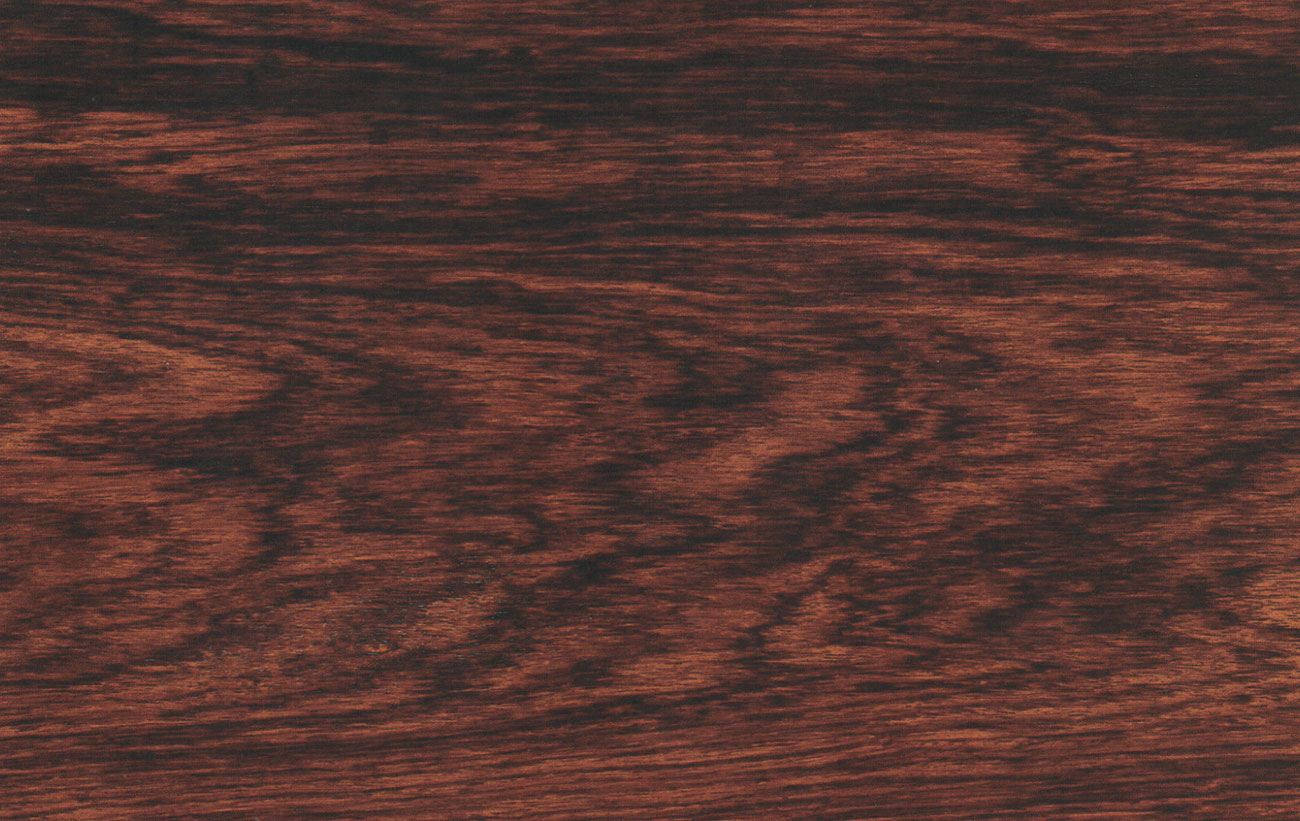Description:
The heartwood varies from rose to deep brown, and features darker purple-black lines, giving a very attractive figure. It has a narrowly interlocked or crossed grain, with a moderately coarse and uniform texture and a dull to medium lustre. When quartersawn, it can exhibit a beautiful ribbon figure. The sapwood is clearly defined from the heartwood and is yellowish-white, often with a purplish hue. When grown in commercial plantations, the wood is marketed as sonokeling.
Typical dry weight: 53 lb/ft³ (850 kg/m³)
Specific gravity: .85
Properties:
Indian Rosewood is heavy, with high crushing and bending strengths, medium resistance to shock loads, and low stiffness. Due to its hardness – 2 ½ times that of oak – it is difficult to work by hand or machine. Calcareous deposits in the wood can make it very difficult to saw and work, and can blunt cutting edges rapidly and severely. Slow speeds are advised for mortising, and boring can be tricky. The wood turns, sands, screws, and glues well, but is difficult to nail. It can be brought to an excellent polished or waxed finish after pre-filling.
Seasoning:
It dries quite rapidly with minimal degrade, but if it is allowed to dry too rapidly surface checking and end splitting can occur. There is small movement in use.
Durability:
The heartwood is very durable, resistant to preservative treatment, and highly resistant to attack from decay fungi and termites. The sapwood is vulnerable to attack from the powder-post beetle.
Typical Uses:
Quality furniture and cabinetmaking, musical instruments including organ pipes and violin bows, turnery, boatbuilding, bank and shop fittings, office furniture, kitchen cabinets, shuttles. It is also sliced for decorative veneers.



 GO BACK
GO BACK